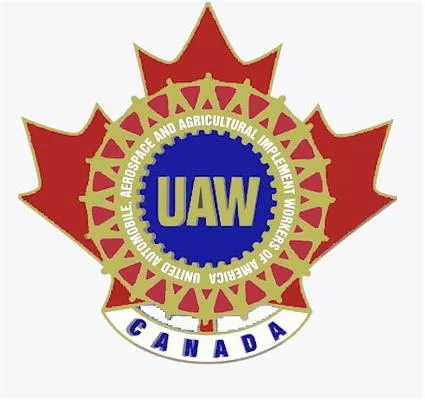The political ground in Ontario is shifting

The political ground in Ontario is shifting. On April 4, 150,000 high school students from 700 schools across the province walked out of class in protest of the Tory government’s proposed cuts to education. Just two days later, over 30,000 teachers, education workers, and allies rallied at Queen’s Park against the cuts. These are the largest mobilizations against the Ford government to date.
The Ford Tories have spent 10 months of attacks on workers, students, the poor, and the public sector on multiple fronts. While some of these attacks have garnered a response, such as the vigorous protests of parents with autistic children, most of the fightback before this past week has been modest and fragmented. The government’s frontal assault on the public education system has brought together growing popular dissatisfaction into large, focused protests. The possibility of building a mass protest movement is now real, and sections of organized labour are already moving in this direction.
Labour’s plan to take on Ford
Two weeks ago, 1,000 trade union activists and allies met at the Toronto Convention Centre for the Ontario Federation of Labour’s “Power of Many” conference. Billed as a political action campaign to build the fightback against Ford, the unexpected high turnout showed many people have an appetite to fight.
The province’s labour leadership outlined their campaign proposals. Between late February and early April, the OFL has hosted regional activation meetings seven towns and cities, including Hamilton, London, North Bay, Oshawa, Waterloo, Kingston, Ottawa and Sault Ste. Marie. The overall campaign goal is to build rapid response networks in 12 regions and hire a part-time organizer in each of those regions. By the end of 2020, the OFL hopes to have collected 500,000 contacts and activated 4,000 new volunteers.
From April to June, a series of dates were identified by the OFL to mobilize around: April 6 rally for education; April 17 response to the budget; April 28 (April 29 in Toronto) Day of Mourning; April 30 health care rally; and the June 7 OFL day of action. Not identified were actions being organized for May Day and Injured Workers Day on June 1.
Beyond these dates the, the OFL has simply outlined July through October 22 as the “federal election campaign.” The second phase of the campaign set the goals of getting 500,000 more contacts from 2021-2022, activating an additional 10,000 volunteers, escalating direct actions with an aim of shutting down targeted regions, mapping all key ridings, and getting pro-labour candidates nominated in key ridings.
Labour does need an action plan. Identifying key dates to build coordinated actions around is a must if the fight against Ford is to escalate. But it was apparent from the conference the labour leadership is confused about the politics and strategy they’re proposing. It was not at all clear what the Power of Many is: it was simultaneously referred to as a tool to build a rapid response network and as a campaign.
It is necessary for trade unionists to build regional networks to broaden our base to stop Ford. But building these networks will require relevant and concrete demands that are more specific than just getting rid of Ford, and can speak to wider numbers of people in their workplace and neighbourhoods.
Rank-and-file activists will have to grapple with two very real issues: how can we connect workplace issues, the fight against employers, with the wider goal of stopping Ford’s agenda? And how can we ensure that we are bringing workers together and not simply reproducing the current divisions within the union movement and wider working class?
Focus on the streets not the ballot box
The labour leadership, however, are in crystal clear agreement that Ford’s agenda can only really be defeated at the ballot box. The Power of Many strategy focuses on key swing ridings, getting the right people nominated, and mobilizing the volunteers and contact lists into an electoral machine for 2022. While turfing Ford and the Tories at the ballot box is necessary, we also need to halt the Ford agenda, and empower workers to take on their employers. Emboldened by Ford, the business community will be unrelenting in their attack on workers until they feel the heat from workers. Waiting for change in 2022 to stop the attacks from Ford and his business base is not an option
It is deeply concerning that the Power of Many conference focuses on July through October as the federal election. To limit our anti-Ford organizing to canvassing and outreach for the federal election would be a fatal mistake for labour. Campaigns and political struggle cannot be turned on and off like a faucet; once campaigns become dormant, they lose any initiative they might have had, and become much harder to revive.
Rather than dropping all our work for four months to focus on the federal election, the labour movement would see far better results by focusing on fighting Ford’s agenda. Hammering the Ford Tories is the best way to ensure the Scheer Tories are beaten back in Ontario and beyond.
If Ontario’s labour movement can lead a large protest movement against the Ford Tories during this period, it would pull the political terrain to the left provincially and federally. Collective struggle, not electioneering, is what will give workers the tools to resist xenophobia and racism used to divide us, expose the anti-worker policies of the Liberals and Tories, and motivate people to go the polls and vote on class issues.
To ensure this happens we need to build effective workplace committees that are focused on activating members to take on Ford’s cuts and the bosses Ford serves. These committees need to have coordinated actions to build towards, using the already planned days of protest is a good start, but we need to think further ahead.
Education is the key fight
The fall will be a crucial period of struggle for workers in the province. The teachers, education workers and school staff will be in bargaining and could be heading towards a province-wide strike, while post-secondary students will be fighting to stop the Tories from turning the screws on tuition, loan conditions, and student union rights. If the teachers are defeated and the student struggle is not supported we are likely as a labour movement to experience many more defeats.
The outcome of this education fight will likely determine the balance of class forces in Ontario through to the next election and beyond. The fights around education are already touching a nerve across the province. While healthcare has the potential to be a major fight, union collaboration in the healthcare sector is weak, and sweeping essential services legislation keeps most of the sector free of industrial disruption.
Saying that the education fight is the key in building the fight back against Ford at this moment does not diminish the importance of other issues and struggles against Ford’s cuts. Nor does it mean we should abandon fighting on other issues. It simply means that at this moment we all need to find a way to relate to and support education workers and students in struggle, because it offers the best opportunity to build a broad united working-class opposition to Ford.
Bringing it all together for the Fall
A number of labour leaders at the Power of Many conference told the audience that if they called a mass action tomorrow we wouldn’t get the numbers. Twelve days later, 30,000 teachers and allies protested outside Queen’s Park at the Rally for Education. It is true that if labour leaders snap their fingers they are not going to magically conjure up large protests. But it would be a mistake to say that mass protests shouldn’t be on our agenda, especially in the current context. Rank-and-file trade union activists need build the case for large protests and mass actions, by winning the argument in our workplaces, in our union locals and labour councils. We need to drive this movement from the bottom up.
Ford’s budget on April 11 will likely contain attacks on many fronts. There is a real danger the Tory attacks will fragment our struggles, divide our forces, and exhaust our efforts as we try to fight on all fronts.
Isolating our struggles by sector or issue will be a barrier to building a broad movement. It would be a mistake, for example, to avoid developing a plan for the healthcare and education struggles to coalesce into a broader anti-Ford movement, and lay the popular foundations for new political priorities in this province. We know the playbook of both the Liberals and Tories is to divide and conquer, of “thoughtful” crumbs here, and big promises there. We should be arguing for Ontario’s working class to unify around common actions.
Much like the Fight for $15 and Fairness campaigns did, the labour movement should encourage local actions, with a clear political message and goals in a way which built towards larger actions. The Fight for $15 and Fairness early on identified key dates for coordinated action, the 14 and then the 15 of every month, for local organizers to work towards. These coordinated local actions set the rhythm of outreach activity and helped provide the base to call for even larger actions as the campaign grew.
What next?
As the fight against Ford escalates we should be prepared for events to move fast. It is a positive that there are a series of protests already in the works and we should be building them as big as possible, especially the April 30 rally for health care. Anyone and everyone with links to the high school and post-secondary student organizers should be encouraging participation on Friday June 7, the next OFL day of action. Bringing together labour-led marches with student walkouts around the province would send a powerful message – and could be disruptive.
This is also a good time to push for labour to call for large protest at Queen’s Park the day or weekend the legislature is set to return in the fall (currently this is set for September 9). While this may seem far off, getting labour to commit to this will do a number of things. First it will help prevent inactivity during the federal election. Second it will give something for local activists to build towards using the rapid response networks contacts they gather. Third it could be a massive show of support for the teachers, as they could be on strike or about to be on strike by September. Letting the teachers fight alone without planning ahead for massive mobilizations now would be a major mistake. There is a real opportunity for the fight against Ford to take a major leap in the fall, but we have to start laying the groundwork for that now. If we, as a labour movement, enter the summer without a plan for the fall, or a narrow federal election plan with emergency rallies, we are in serious trouble.
This last couple of weeks shows Ford is vulnerable and that there is a real willingness among many to fight. The time is right to build for a large action in the fall to unify the movement against the Tories in a way that can also show massive solidarity with the teachers’ fight. Ford’s austerity agenda is putting the possibility of mass action on the table in Ontario. This is a real opening for the labour movement, one that we cannot afford to squander.

